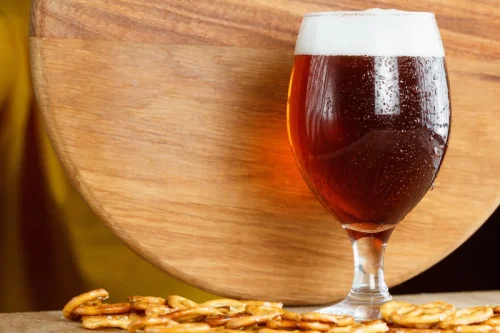
Thus, it is plausible that patients with higher A1C have elevated gluconeogenic flux and, hence, exhibit more pronounced fasting hypoglycemic effects when moderate alcohol consumption is started. Another finding of this research was the effects of genotype and alcohol consumption on glucose level patterns during the OGTT. Chronic heavy drinkers had increased fasting and 1 h-OGTT glucose levels and decreased HOMA-B compared with never-drinkers. However, at 2 h, never-drinkers carrying the GCK TT homozygous showed similar levels of glucose as chronic heavy drinkers with TT genotype by decreasing their late insulin secretion. The 2 h post-OGTT glucose levels of chronic heavy drinkers with INSR AACT haplotype were recovered similar to never-drinkers by increasing their composite ISI. These results suggest that the 1 h post-OGTT glucose level is greatly influenced by alcohol consumption, and the 2 h post-OGTT glucose level is affected by the interaction between genotype and alcohol consumption.

Cardiovascular Disease
Any functional defect in GCK suppresses glucose utilization in the liver and decreases insulin secretion from β cells, which may cause diabetes. The findings discussed here presents that the role of chronic use of alcohol on diabetes might be high of importance for clinical research and practice. The finding that was shown may also help to explain previous contradictory findings, regarding the association between alcoholism and diabetes. Chronic heavy consumption deteriorates glucose tolerance and insulin resistance, and this may well be one of the mechanisms involved in the malignant effect of alcohol, with regard to development of diabetes. In addition, appetite-regulating peptides, particularly ghrelin and leptin, BDNF, and hippocampal LTP, which play important roles in the brain and insulin sensitivity, could become possible candidates for mediation that links T2DM and alcohol consumption. The novel mechanisms of these two appetite regulating peptides, BDNF and hippocampal LTP are widely involved in the neurobiology of alcohol dependence and T2DM.

Comparison of changes in serum ethanol concentration during alcohol loading in the presence/absence of glucose
- In contrast, under nutritional conditions favoring maintenance of euglycemia, acute alcohol results in either no change in whole-body glucose flux [11,27,28,29] or a decrease in glucose Ra which is offset by a proportional reduction in glucose Rd [6,29,30].
- A systematic search was undertaken, identifying studies that reported a temporal association between alcohol consumption and the risk of type 2 diabetes.
- Alcohol-induced brain damages were commonly observed in otherwise, uncomplicated alcoholics [58].
- For both men and women, the incidence of the above outcomes, except CHD, increased with age.
- However, at 2 h, never-drinkers carrying the GCK TT homozygous showed similar levels of glucose as chronic heavy drinkers with TT genotype by decreasing their late insulin secretion.
While, as the name implies, insulin facilitates glucose disposal via the first mechanism, NIMGU is driven primary by the mass action effect of glucose and accounts for ~75%–80% of basal whole-body glucose disposal [59]. Hence, some of the discordance noted above related to the alcohol-induced changes in muscle glucose uptake may be attributable to between-study differences in the prevailing concentrations of glucose, even if such changes fail to achieve statistical significance. Low-dose alcohol does not acutely alter whole-body glucose effectiveness [60,61] but there are no data pertaining to the ability of alcohol to independently regulate NIMGU at the tissue level. As noted above, alcohol administered acutely does not generally decrease whole-body glucose Ra but does markedly suppress gluconeogenesis.
Diabetes and the Risks of Drinking Alcohol
Catecholamines further decrease insulin production and increase glucagon production. Accordingly, physicians who treat diabetics known to consume large amounts of alcohol must be aware of the risk of alcoholic ketoacidosis in those patients. The hormone insulin, which is produced in the pancreas, is an important regulator of blood sugar levels. In people with diabetes, the pancreas does not produce sufficient insulin (type 1 diabetes) or the body does not respond appropriately to the insulin (type 2 diabetes). Alcohol consumption by diabetics can worsen blood sugar control in those patients.

Who Should Not Drink Alcohol?
- Numerous studies have investigated alcohol’s effects on the control of blood sugar levels in diabetics.
- Consistent with this assumption, studies have shown that ethanol metabolism tends to increase the hepatocytes’ oxygen uptake from the blood (Tsukamoto and Xi 1989).
- As mentioned earlier in this article, poor food intake can lead to depleted glycogen levels.
- A total of 4855 subjects were included in the baseline analysis (35.2% men and 64.8% women).
Studies show drinking moderately (about one drink per day) may improve heart health and decrease the risk of diabetes. However, some studies don’t account for frequency, the population being studied, and the types of beverages consumed. Table S5 | Changes in ethanol values during the combined 75‐g glucose plus 20‐g alcohol tolerance test and the 20‐g alcohol tolerance test in the subgroup of the participants with both active alcohol dehydrogenase 1B and aldehyde dehydrogenase 2 genotypes. RESEARCH DESIGN AND METHODS—We randomly assigned 109 patients (41–74 years old) with established type 2 diabetes who abstained from alcohol to receive 150 ml wine (13 g alcohol) or nonalcoholic diet beer (control) each day during a 3-month multicenter trial. Having identified significant differences in dose-response by both sex and referent group, sex-specific data from the five studies using a strictly defined never-drinking abstention category are reported in Supplementary Fig. Dose-response relationship between average daily alcohol consumption and incident type 2 diabetes, stratified by referent category and adjusted for sex.
In the absence of specific advice to patients about the “hangover” period, we performed a controlled study to examine both glucose control and hormonal responses through to midday after consumption of an alcoholic beverage in the evening. Interesting conceptual notions connecting the impact of chronic heavy use of alcohol and T2DM on hippocamal LTP processes also have been elaborated from alteration of endogenous BDNF. BDNF, acting through its TrkB can diabetics get drunk receptor, plays a role in the synaptic plasticity and positively moderates processes, which leads to a stable LTP in hippocampus [56], as well as glucose metabolism in diabetes [41]. Recently, there has been a report that showed chronic heavy drinking decreases the serum BDNF levels in OLETF rats that provide a model for the pathophsiology of human T2DM [16], and decreased BDNF was also observed in rats displaying insulin resistance and LTP [57].
- Alcohol hypoglycemia has been reproduced by sustained (8-h) administration of ethanol, with blood levels up to 97 mmol/l (19).
- In other words, these reactions leave the liver cells in a state that is particularly vulnerable to damage from the byproducts of ethanol metabolism, such as free radicals and acetaldehyde.
- Thus, in the diabetic population, alcohol apparently exerts a more rapid glucose-lowering effect, whereas the elevation in HDL requires more prolonged intervention.
- Many people with alcoholic liver disease also have either glucose intolerance or diabetes.
For this reason, you should never drink alcohol when your blood glucose is already low. Previous report suggested that hypertension and dyslipidemia are implicated in the onset of type 2 diabetes51. However, in the current study, hypertension and dyslipidemia were not included as covariates. This decision was made because we believe that alcohol consumption may also impact blood pressure and lipid levels, suggesting that they could serve as intermediate factors in the onset of type 2 diabetes in our analyses. We observed significant decreases (Table 2 of the online appendix) in levels of A1C, LDL cholesterol, and waist circumference in the alcohol group and an unexpected significant reduction in HDL cholesterol in the control group after 12 weeks compared with baseline levels.



